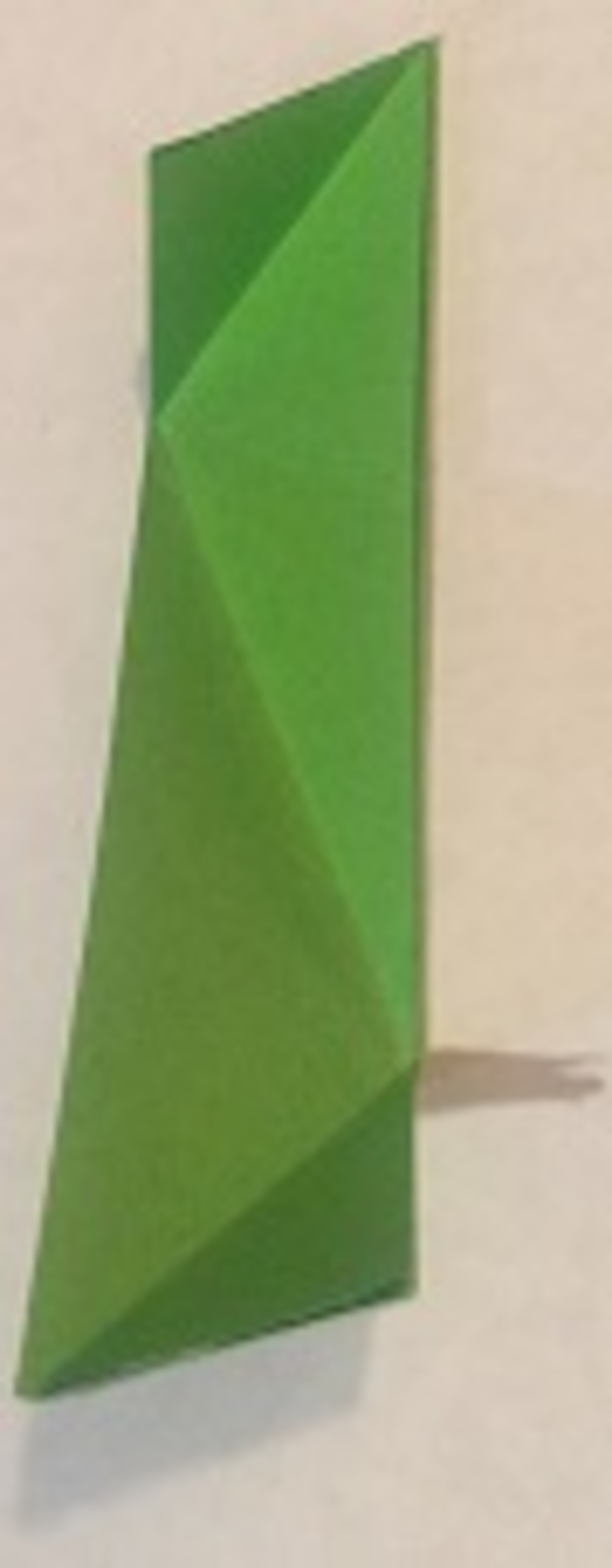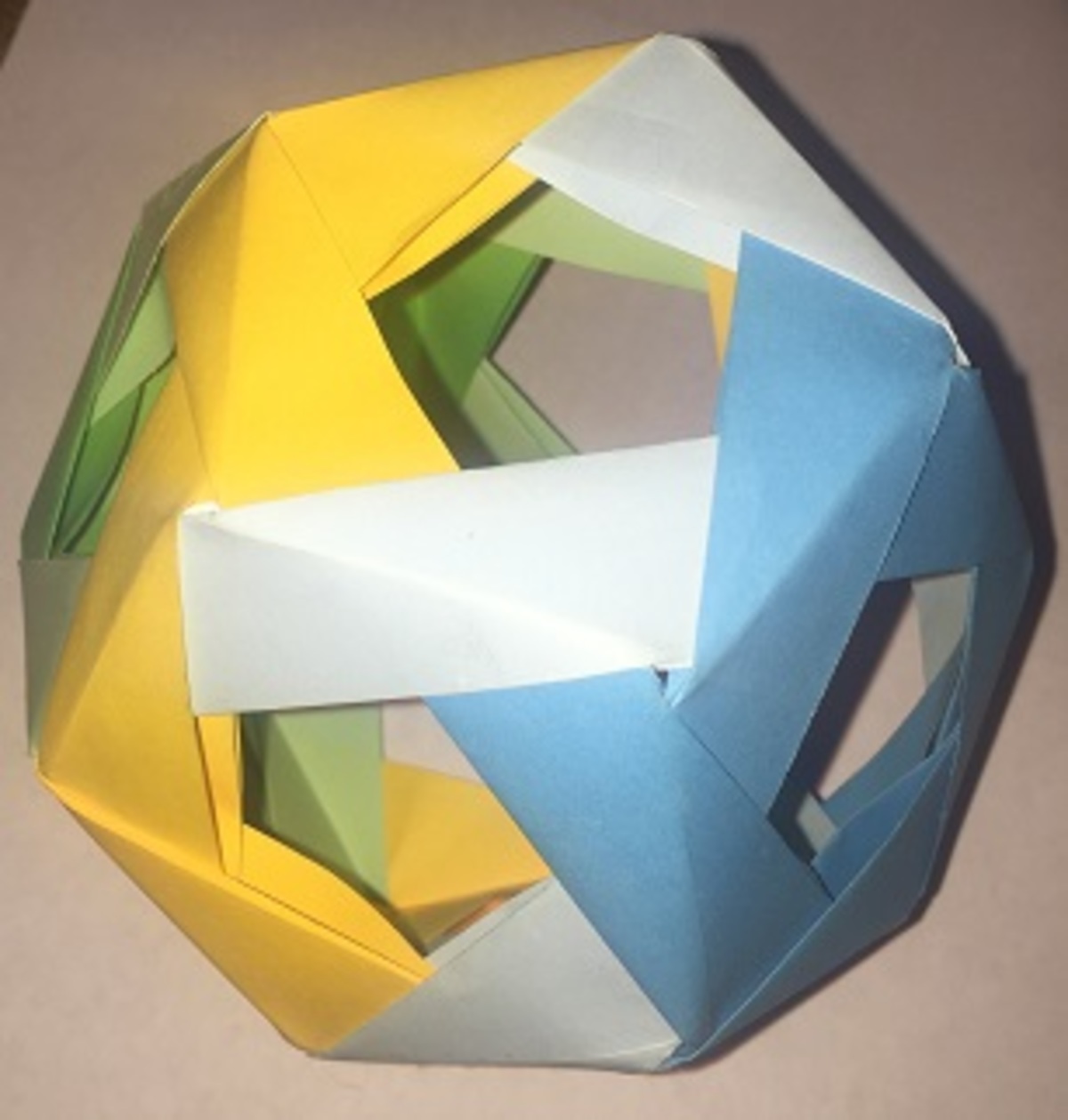Origami imperfection 1


 This is a nice origami dodecahedron made from 30 edge modules. The individual modules are simple to make:
This is a nice origami dodecahedron made from 30 edge modules. The individual modules are simple to make:
-
Quarter a square so the end view looks like a W.
-
Fold two triangular corners to form creases as shown in the first picture.
-
Fold a diagonal defined by the ends of the creases from the previous step as in the second picture.
-
Make 30 modules and assemble as in the final picture.
Mathematically, this module does not yield the correct angle for a pentagon. In reality, the error is small enough that it is unnoticeable. Find this error in degrees.
The answer is 0.4349488229.
This section requires Javascript.
You are seeing this because something didn't load right. We suggest you, (a) try
refreshing the page, (b) enabling javascript if it is disabled on your browser and,
finally, (c)
loading the
non-javascript version of this page
. We're sorry about the hassle.
Let the original square be divided up into 16 equal squares. Then the quarter-square of Step 1 will consist of 4 of the 16 little squares, and the two triangular corners of Step 3 will take up 2 of those little squares, and the diagonal of Step 3 will take up the remaining 2 little squares, as pictured below.
Then ∠ A O B = tan − 1 1 1 and ∠ B O C = tan − 1 1 2 , which makes ∠ A O C = tan − 1 1 1 + tan − 1 1 2 ≈ 1 0 8 . 4 3 4 9 4 8 8 2 °
This is close to the interior angle of a regular pentagon, which is actually 5 ( 5 − 2 ) 1 8 0 ° = 1 0 8 ° .
This makes the difference 1 0 8 . 4 3 4 9 4 8 8 2 ° − 1 0 8 ° = 0 . 4 3 4 9 4 8 8 2 ° .